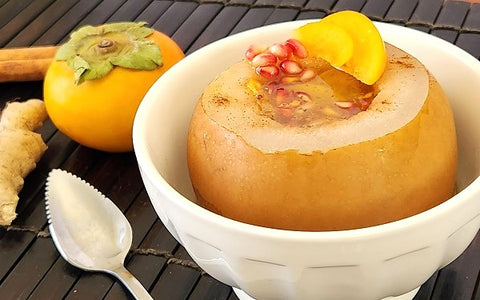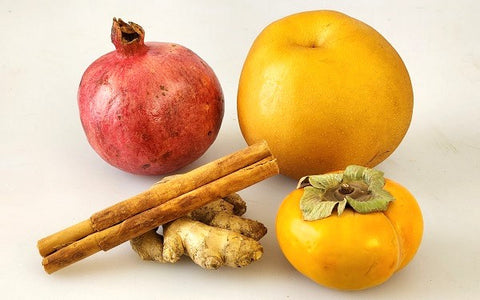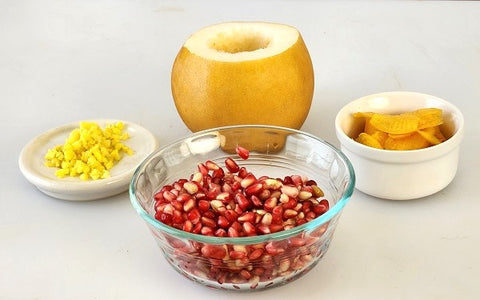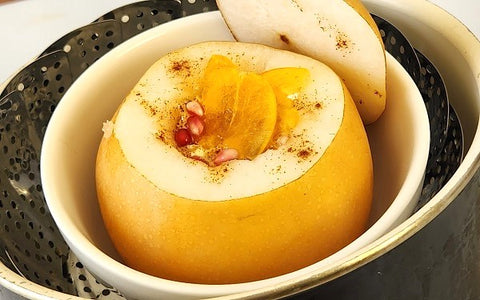Carb Solution: (Another!) Birthday Dessert

Over half of the U.S. adult population, some 154 million, qualify as overweight or obese. Another 29 million of us have Diabetes, many as a direct result of being overweight. Then there are the 23.9 million overweight children dutifully following the example of their XXL adult role models. Diabetes and these extra pounds cost this country billions annually in both medical and economic resources, not to mention the effect these weight-related maladies have on a person’s overall mental well-being and happiness. However, both diabetes and being overweight are very manageable, even preventable, with a few lifestyle tweaks. By maintaining a sensible diet in conjunction with some consistent exercise, no matter how minimal, we can all be in total control of our own weight. One easy way to start taking that control is to make decisions about the foods we eat based on the glycemic index [GI] and glycemic load [GL].
Simply put, our bodies convert all foods into sugar calories that provide energy to the body via the bloodstream. The Glycemic Index assigns a score of 1 to 100 to all foods based on how quickly the body converts that food into sugar. Foods that break down slowly enable the body to assimilate these calories of energy more efficiently without overwhelming the body with more sugar than it can process. While this is especially important for people with diabetes who process sugars much slower than others, everyone can benefit from foods with low glycemic scores since they also reduce appetite and encourage the metabolism to burn body fat. Conversely, a diet of foods high on the glycemic charts has been proven to increase appetite and impede effective fat oxidation.
A QUICKIE GLYCEMIC PRIMER:
- The glycemic index of a food compares its effect on blood sugar level to that of pure glucose, which has a score of 100. White breads, which are made of processed white flour, are at the top of this scale, scoring a “perfect” 100 on the glycemic index. For perspective, a score of 55 or below denotes a low glycemic index food; 70 or above is considered very high. Serving size is not a consideration in arriving at a food’s Glycemic Index number.
- The glycemic load, on the other hand, focuses on how much digestible carbohydrates (sugars) a food contains in a typical single serving, which is defined as approximately 3.5 ounces. For glycemic load, a score of 20 or more is high, while 10 or less is low.
However, if one is counting carbs and must avoid sweets, that search for “something special” is soon followed by a mental list of limiting DO NOTs, depending on the occasion. In this case, DO NOT: cakes or ice cream, sugary or flour-based anything! It’s always a challenge, but a fun one trying to come up with a celebratory dish that is elegant and decadent (my criteria) as well as stays within the confines of a low carb discipline. Though, in truth, not much is lost by having to pass on the traditional frosted birthday cake with all the trimmings, which include processed flour, a lot of sugar and fat (butter]) The ingredients in a birthday cake alone are enough to age a person!
Anyway, during this annual search for a special dessert for this year’s party-for-one, I came across an interesting steamed Korean pear recipe on the ‘net. While the dish has been prepared for centuries as a remedy for colds and sore throats with honey as one of its main components, I saw the potential for a glycemic-friendly special occasion dessert with just a few ingredient swaps.
The variety of pear was not one of the needed ingredient changes. Asian pears have always been a personal favorite, a fruit very much underappreciated by the U.S. consumer. Asian Pears have been cultivated in what is now Japan, China and Korea as far back as 1100 BC, making them the oldest cultivated pear variety in the world. The Butterscotch™ Pear, imported directly from our growing partners in South Korea, is crunchy and juicy-sweet. The variety is prized for its large size and paper-thin skin that lacks the bitter flavor of other Asian pear varieties. Each piece of fruit is grown with meticulous care and even hand-wrapped to preserve moisture as well as protect it from bruising. The result is a gorgeous, brownish-orange, blemish-free fruit – certainly a good start to a special occasion dish!
The honey component in the original recipe had to go. Honey is made by bees, no preservatives or additives, so it must be a lot better that processed sugar, right? NOT. Ditto with Agave Syrup, too, by the way. These are both great “natural” sweeteners; however, to a diabetic or a person just counting carbs, both are simply forms of sugar calories. For a diabetic whose pancreas does not process carbs (sugars) efficiently, the metabolism spikes the same, be it honey, agave, or processed cane sugar. Besides, replacing the honey with a shot glass of sake and a dash of mirin not only added my kind of sweetness and worked flavor-wise but also paired culturally with the Korean Asian pear. BTW, hard liquor in moderation does not spike blood sugars—even the sweet sake and mirin; the trick, especially if on insulin, is to always eat something when consuming alcohol. In this case, a delicious sake-infused pear is that needed nibble!
Keeping with the Asian style of this dish, stuffing the cavity with very thin shavings of a Fuyu persimmon seemed almost logical. Here’s another fresh fruit that is not only underappreciated by the consumer in this country but is grossly mishandled at retail more often than not. I had the usual quality/handling problem at my local grocers when shopping for this recipe. That is, the Fuyu persimmons on display were all soft, so I inquired if there was any what I referred to as “unripe” fruit in the backroom, and, of course, there was! Wish I had a dollar for each time I have informed a retail produce clerk that the Fuyu persimmon should be sold when still firm, like an apple, and is best enjoyed in that same condition. The Fuyu is a non-astringent variety, free of bitter tannins, so it has a spicy-sweet-cinnamon flavor with a unique, almost tropical aftertaste. The Fuyu has virtually no core, which allows for large, paper-thin slices that easily absorb the sweet liquor as well as just a hint of pleasant heat from the minced ginger ingredient that was also sprinkled into the cavity. These slices were a special treat within a special treat!
A sprinkle of pomegranate arils and a few thin slices of persimmon for garnish completed this dish with a flair to match the occasion. The arils not only added a splash of color to the plating but also a guaranteed a burst of that exotic, sweet-tart juice with every spoonful. Ha, there is no place to place a candle or two on this birthday dessert, but the ruby red arils shine bright! Packed with antioxidants and oodles of other nutrients—an appropriate gift to one’s own well-being on this very special day!
Twisted Steamed Korean Pear
Serves 1

Ingredients
1 Butterscotch™ Pear
½ tablespoon ginger, minced
2 tablespoons Fuyu persimmon shavings
2 tablespoons Melissa’s Pomegranate Arils
1 tablespoons butter
1 teaspoon powdered cinnamon
1 tablespoons mirin
1 ounce sake (fill cavity)
Preparation

Make a pear bowl and lid by slicing the top 1/5 of the pear to use it as a lid. Using a melon baller, dig out the seeds and enough fruit to form a bowl. Note: The sides of the pear should be left thick to avoid collapse during steaming.

Fill the pear bowl in order: ginger, persimmon shavings, Pomegranate arils, patty of butter, sprinkle of cinnamon, mirin, fill with sake.

Transfer the pear into a deep bowl to catch any liquid overflow during steaming. Cover with the pear lid.

Place the bowl with the pear into a steamer, cover and simmer on low heat for about 30 minutes.
Plating: Serve warm or chilled; garnish with persimmon wedges and a few more arils.

